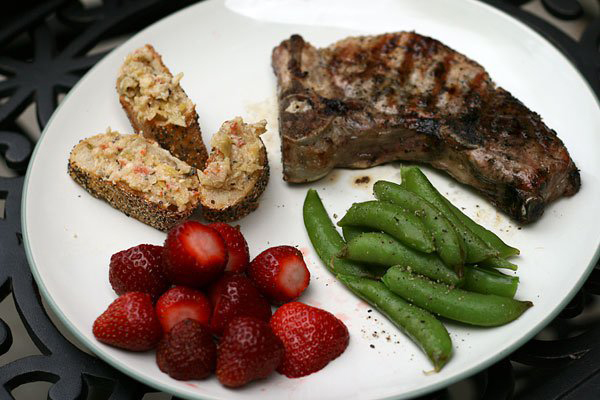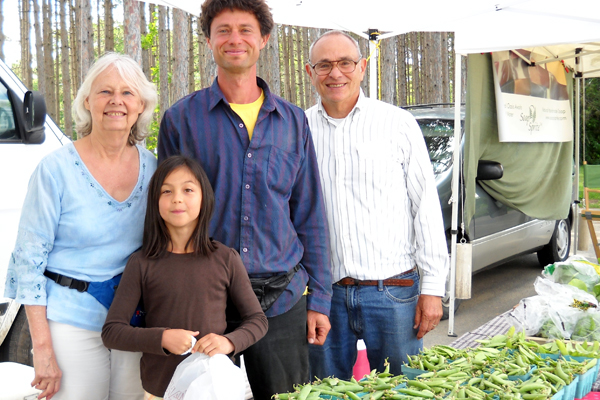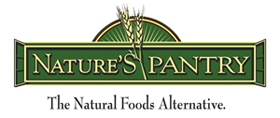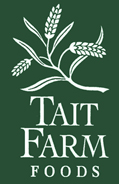-

Erin Donahue -

Christina Barkanic -

Brittany Trott -

Emily Wiley -

Jessica Reilley -

Chris Raines -

Will Nichols -

Emily Reddy -

Michele Marchetti -

Michele Frank -

James Gherardi -

Kit Henshaw -

Christina and Erin -

Kim Tait -

Erin McKinney -

Steve Spanelli -

Sam Komlenic -

Katherine Taylor Grofic -

James Eisenstein -

Jamie Oberdick -

Anna Lombardo -

LacCreta Holland -

Tony Ricci -

Local Food Journey -

Laura Young -

Kristin Camplese -

Harrison's Fresh + Local -

Danielle Matalonis -

Kristine A. -

Linda Weaver -

Naomi Elle Schwartz -

Dana Stuchul -

Cara McShane -

Brittany Smith -

Jessica Illuzzi - Frosty
-

Jessica Paholsky -

James Sechrengost -

Brad Yeckley -

Maya Althouse -

Jordan Reabold -

Kim Chase -

Maria Bryant - Alexandrea Scott
Unpaid Field Hand: The Story of Peas
Posted by James Eisenstein on 06/21, 2011 at 12:19 PM

Boalsburg Farmers Market Dinner. Photo Credit Emily Wiley.
Last Tuesday night, Emily Wiley posted a picture of her dinner to the Boalsburg Farmers Market Facebook page. The caption said: “Dinner tonight courtesy of the Boalsburg Farmers Market. Pork chops from Cow-a-Hen Farm. Snap peas from Jade Family Farm. Bread from Gemelli Bakery with lemon-artichoke pesto from Fasta & Ravioli Co. And strawberries from Way Fruit Farm. Happiness on a plate.â€
Emily knew the peas she bought were grown at Jade Family Farm, but how did the green pods find their way to our farm and then to the market? Well, this unpaid field hand decided to tackle that question.
Gallatin Valley Seed Company in Montana provides Fedco Seed Company with certified organic Sugar Ann snap peas. (For you gardeners out there who haven’t heard of Fedco seeds, you should get to know them. They have a wonderful catalog with lots of organic and heirloom seeds, and their prices are really good.) Last year we purchased our organic snap pea seeds from Fedco, along with many of the other vegetable seeds we grow.
Now peas really like cool weather, so it is important to get them into the ground early. But – surprise! – there is a catch. You have to prepare the ground before planting, and if you are living through the wettest spring in memory (a.k.a. 2011), you can’t. And even if you do get them into the ground, and then it turns cold and wet, they rot. In fact, when farmers are not busy trying to figure out how to square the circle, they ponder how to get peas in early and how to get them to germinate.
This spring, the peas went in late, and consequently, the plants are small. This is one of the woes we shared with other farmers described in the “Wet Spring Impacts Farmers†story posted on the Local Food Journey last week. Sharp-eyed readers will discover this for themselves by scrutinizing a picture of our pea field.

Pea Field at Jade Family Farm. Photo Credit James Eisenstein.
Take note, also, to the rows of stakes with plastic trellises used to support the peas. Since stakes don’t leap into the ground themselves, some lucky soul had to pound them in and attach the trellis before the peas got too big. Ah, but it was worth it, because (look closely) pods appear.
The next issue is that peas have to be picked by hand, one at a time. And you have to keep picking them, at least once every three days. If you don’t, the pods become big, tough, and inedible.
If you’re able to complete all of these steps – from planting on time to germinating to trellising to picking – then it’s time to pack the peas and take them to the market. This is the most rewarding part of the story for us – sharing our produce with satisfied customers like Emily.

Farmer John with Evelyn (age 9), Ginny, and Unpaid Field Hand Jim Eisenstein of Jade Family Farm. Photo Courtesy James Eisenstein.
Read more stories from the Unpaid Field Hand.
![]() Author: James Eisenstein
Author: James Eisenstein
Bio: Unpaid Field Hand at Jade Family Farm | Former Penn State Professor
- Our Local Food Journey comes to an end
- Winter isn’t a quiet time at the farm
- Get the taste of garden season right now by growing herbs indoors
- All you need to know about PASA’s Farming for the Future conference









Comments
Posted by .(JavaScript must be enabled to view this email address)
07/19 at 10:19 AM
Villanova, PA
Thank you for this story of “farm to table” focussing on growing peas. Thanks also for the references to Fedco and other links.
The link provided below is to a column I wrote last year about our home vegetable garden; I write one vegetable garden column annually among the others I write twice monthly for our local weekly newspaper in the Main Line suburbs, “Main Line Suburban Life.” The backyard veggie garden is both personal and political, as is “farm to table” and eating locally, of course.
It would be good to learn more about push and pull planting - which plants “pull” nutrients from the soil and which plants “push” nutrients back into the soil - any preferred references? Bill McKibben in “Eaarth” mentions this and the Swahili term for it as well, but it is common practice in native American planting too, my daughter says.
Thanks much, Anne Minicozzi, local columnist, “Literally Speaking”
http://www.mainlinemedianews.com/articles/2010/07/20/main_line_suburban_life/opinion/doc4c460b1087596957235917.txt?viewmode=fullstory
Page 1 of 1 pages